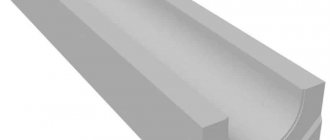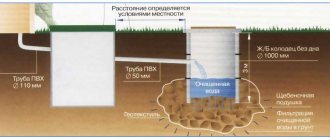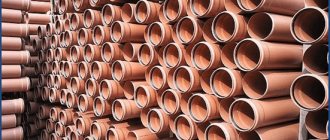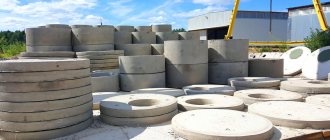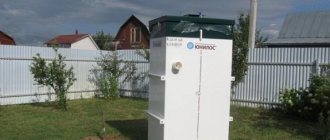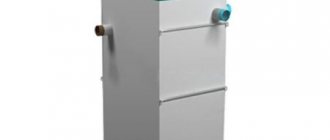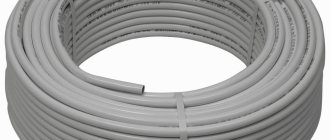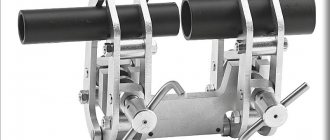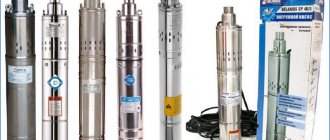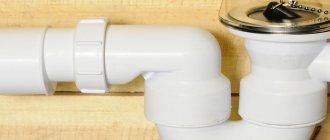The irrigation system, drainage of storm water and snow melt water includes a product - a reinforced concrete drainage tray. With the help of concrete trays and the corresponding infrastructure, irrigation and drainage systems transport a useful or harmful product - irrigation or waste water to fields, storm or sewer collectors.
Types of reinforced concrete trays
The main purpose of this product is the removal of precipitation and soil water. The trays are easy to use, easy to install and are highly durable.
According to purpose, products are divided into the following models:
- stormwater - collects and transports precipitation;
- edge - drain excess water from roads to slopes;
- drainage - used in basements and foundations;
- sewer - collect waste into collectors;
- telescopic - move water from bridges and slopes.
There are more than 100 sizes of reinforced concrete trays for drainage. It's easy to spot them in a store. The name contains the letter L, followed by two numbers separated by a hyphen, for example, tray L-1-8. The number 1 means which series the product belongs to, 8 is the vertical load indicator in kN/m. In production, concrete grades M200, M300 and M350 are used, less commonly M400. The output will be products that are resistant to aggressive environmental factors, in particular, strong temperature changes.
Resistance to mechanical loads is increased by treating joints with bitumen mastic, as well as adding special substances to the concrete mixture. All this increases anti-corrosion properties, moisture and frost resistance. Additional strength is provided by reinforcing bars or steel wires.
Installation
When transporting and installing trays, slings are used, for which special mounting loops are provided in the product design. Convenience of installation work is ensured by the comparatively low weight of the products. To install trays in the energy construction zone, standardized products are installed on special bars made of reinforced concrete BK-11a and Bk-12a. Subsequently, the tray products themselves are laid, and cable routes are laid inside them. The structure is covered from above with floor slabs. This type of structural protection allows you to avoid mechanical damage to overhead cable routes as a result of soil displacement and other disturbing factors.
Size range of reinforced concrete trays
To choose the most suitable model, manufacturers offer a large selection of heating main trays, stormwater systems and pipelines.
DN
Trays of this marking have pan-European sizes and originally appeared among the Germans. Indicates the internal width of the gutter. DN standards - 100, 150, 200, 300, 500. There are models with numbers written through a fraction. The second number indicates the depth of the gutter, in mm.
L
These trays with the letter L indicate the length of the section. They range from 400 to 3000 mm. Some manufacturers produce shortened (50-70 cm) or extended (up to 6 meters) versions.
B
Parameter to indicate the outside width. Dimensions vary between 400-1900 mm.
H
Marking to indicate height or depth. The range of these sizes is 380-1500 mm.
Box
The boxes, as mentioned above, are used to lay electrical wiring in their cavity and protect the cables and wires laid in them from mechanical influences. The boxes can be with removable lids or blind, which are a hollow structure that cannot be disassembled. Both steel, usually galvanized, and various plastics are used as materials for the manufacture of boxes. Steel boxes can be perforated or non-perforated. When using steel boxes for laying cables along the facades of buildings, plastic coatings can be applied to them to match the color of the facade.
In Fig. 1 shows a galvanized steel perforated box. Such boxes are convenient when laying them in the cavities of suspended ceilings.
Rice. 1 steel perforated box
For branching boxes and turns of cable routes, special auxiliary sections are used: turns, tees, cross-shaped sections, branches, transitions from one section of the box to another, plugs, cable holders, partitions and some other elements. The use of auxiliary sections significantly speeds up the installation of boxes and improves the aesthetic appearance of the entire electrical installation.
When laying boxes horizontally, they are preferably positioned so that the lid is on top. When laying vertically and when the box cover is located at the bottom, additional fixation of the covers is often required. In accordance with the requirements of the PUE, it is permissible to fill blind boxes up to 35% of their cross-sectional area, and boxes with lids – up to 40%. The cross-sections of cables and wires are taken into account along with insulation and protective sheaths.
Depending on the purpose, steel boxes can have different designs in relation to operating conditions: from light permissible mechanical impacts to very heavy ones.
In Fig. 2 shows a plastic box. Such boxes, having a width of about 100 mm, are often equipped with special inserts for installing plug and low-current sockets in them. This photo shows an office space. Red sockets are used to connect computers, and white sockets are used for household electrical appliances.
Rice. 2 Plastic box with sockets
Plastic boxes can have different sections and colors. Usually you can purchase boxes equipped with turns, tees and plugs.
How much do reinforced concrete trays cost?
Trays for drainage and thermal insulation are produced exclusively by industrial enterprises. For this, not too expensive raw materials are used, which has a positive effect on the final price. The cost of concrete trays of light weight and small dimensions is quite small. But you can’t save money on this issue.
The final cost is formed taking into account the cost of the raw materials used, shape, size, technical characteristics and resistance to loads.
If operating conditions require the purchase of powerful and durable heating main trays, you should not purchase products of smaller sizes and reduced quality in order to reduce the final price. This will be a disservice to the longevity and reliability of the entire complex communications system.
The Time to Build company carries out direct sales of heating main trays from the manufacturer, which allows us to set one of the lowest prices in Tyumen. We also deliver throughout the city and region. To get advice and order the required batch, call us at +7 (3452) 393-263, +7 (958) 253-3633 or leave a request for a call back.
Specifications ↑
All possible characteristics of reinforced concrete trays, as well as the overall dimensions of the products, comply with various GOSTs. Let us consider the most necessary conditions for the production of reinforced concrete products.
GOST 13015.0-83 regulates the following conditions:
- frost resistance of products;
- waterproof trays;
- possible shapes and designs of trays;
- increased strength of the concrete used;
- quality of materials for the production of concrete itself;
- enhanced strength of the material in the presence of groundwater;
- dimensions and shape of the reinforcement embeds used;
- materials (steel grades) for the production of reinforcement products;
- possible deviations of the concrete layer protecting the reinforcement;
- protection of trays from corrosion.
The following requirements are defined for concrete used for the production of trays:
- all types of trays must be made of concrete no worse than M300;
- when compressed, concrete must have a strength of at least 70%;
- for the production of concrete, fillers with a particle size of no more than 15 mm can be used;
- the use of cement is possible at least 400;
- The addition of active additives is not acceptable.
Reinforcing products used in the production of reinforced concrete trays are strictly regulated by GOST 10922-90. The document indicates the type of steel from which they can be made (A-1, A-3) and the diameter of the wire (6 mm for longitudinal reinforcement and 5 mm for transverse reinforcement).
Photo: reinforcement products used in the production of reinforced concrete trays
The concrete surface of the trays should be fairly smooth, without large depressions. In some places, pits and cracks with a depth and width of no more than 3 mm are acceptable.
And in places where structures are fastened, damage to the surface layer is not allowed to exceed 1 mm. These aspects, as well as others, are regulated by regulatory documents.
If you comply with all the requirements necessary for the production of reinforced concrete trays, the products will be of the highest quality with a long service life.
Replacement of reinforced concrete channels is provided for by the operating rules and can be done no more than once every hundred years.
After this time, reinforced concrete structures begin to collapse, their tightness deteriorates and, as a result, pipelines and other systems installed in the channels are damaged.
About fastening methods
Now let's talk about how trays are attached to different surfaces. Based on the installation method, three main directions can be distinguished: wall mounting, floor mounting, and ceiling mounting. In order to secure the trays, elements such as consoles, profiles and hangers are used. Trays can be attached to the wall surface using two methods:
- In the case of consoles, everything is extremely simple. The cantilever element is fixed to the wall surface, and cable trays are mounted directly on it. There are two types of consoles - welded and bent.
- If the console is wall-floor, then you cannot simply lay wires in a tray attached to the wall in this way. They will need to be secured with ties.
But most often, cable trays are mounted on the ceiling surface. In this case, there are more mounting methods, as well as advantages. For example, the cable route will be able to withstand heavy loads. So:
- Most often, cables are attached to the ceiling surface using two studs and a mounting profile. The permissible load is regulated by the thickness of the studs and the frequency of fastening. This installation method is considered the most labor-intensive.
- The second method of installing systems for laying cables on the ceiling involves the use of profile elements. Brackets are fixed to the ceiling surface. Profiles of the required length are fixed on them. Then the consoles are attached to the profile, and the cable trays are already attached to them. This method allows you to install trays along one route on several floors.
- The third installation method involves the use of wall-ceiling consoles. This method is the simplest.
Cable trays are rarely installed on the floor surface. However, you can secure this product to the floor using one of two methods:
- By installing a floor-type console.
- Using special supports that allow you to raise the tray to the desired height and perform multi-story laying along the same route.
Pros and cons
An additional advantage of installing wires in boxes is the quick replacement of cables with new ones in case of failure.
If there is a need to modernize cable networks, that is, replace wires laid in boxes, replace the sealing products themselves with similar types of other parameters, you do not have to face serious problems. It is enough to open the lid, lay a few additional threads or completely replace the wires, or the cable channels themselves with larger cross-sections or made of higher quality material.
You can lay several types of cables in one box at once. They can be power, represent telephone lines, cable television, or the Internet. Some types of boxes are produced with internal partitions. This can be considered another plus.
The disadvantage of boxes is their external installation. For many, this looks somewhat unaesthetic. Especially when you have to remove a large number of wires.
In some cases, this situation is solved by purchasing finishing materials that simultaneously serve as electrical boxes (plastic baseboards with removable strips). In other cases, boxes located on ceilings are masked with suspended panels.
